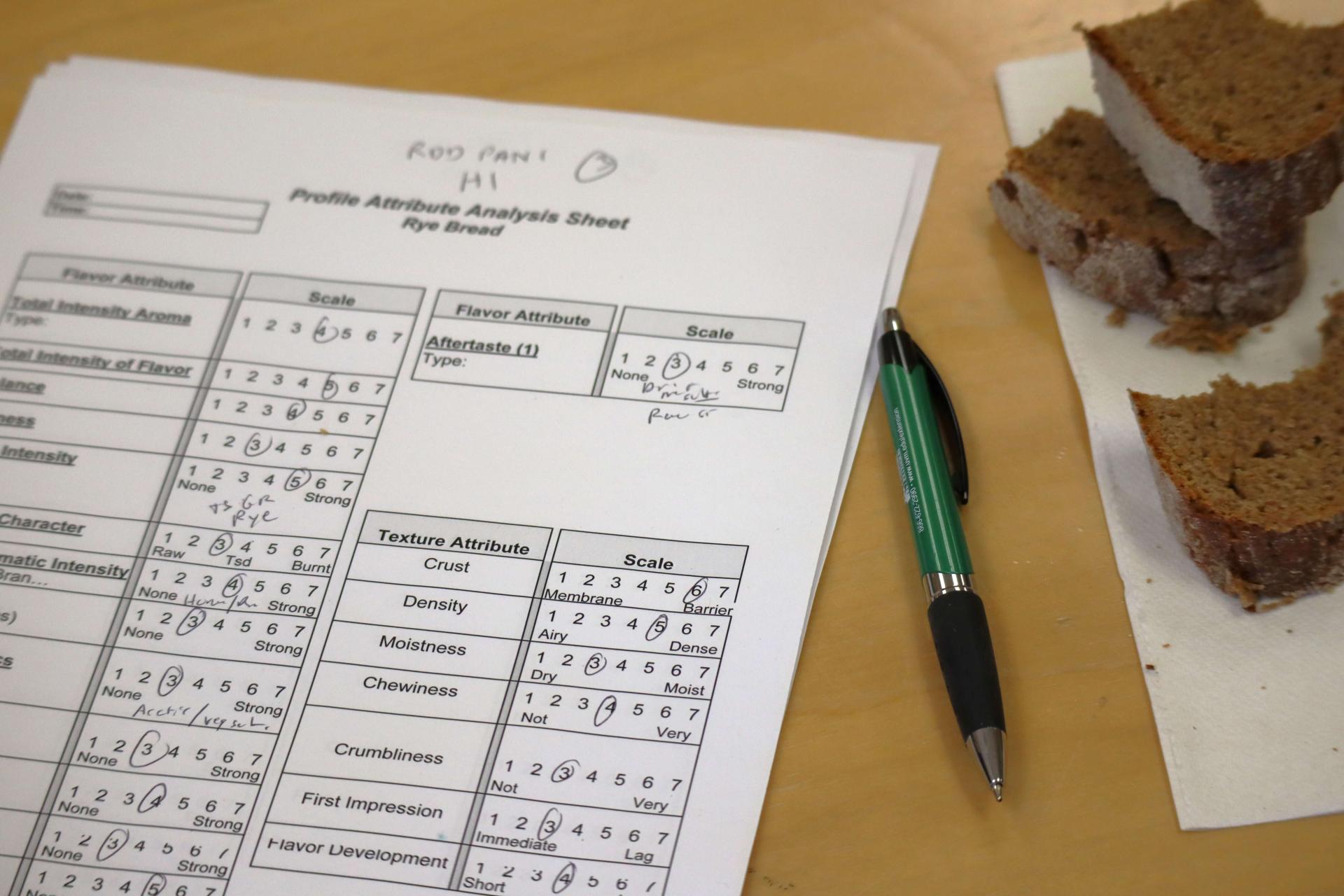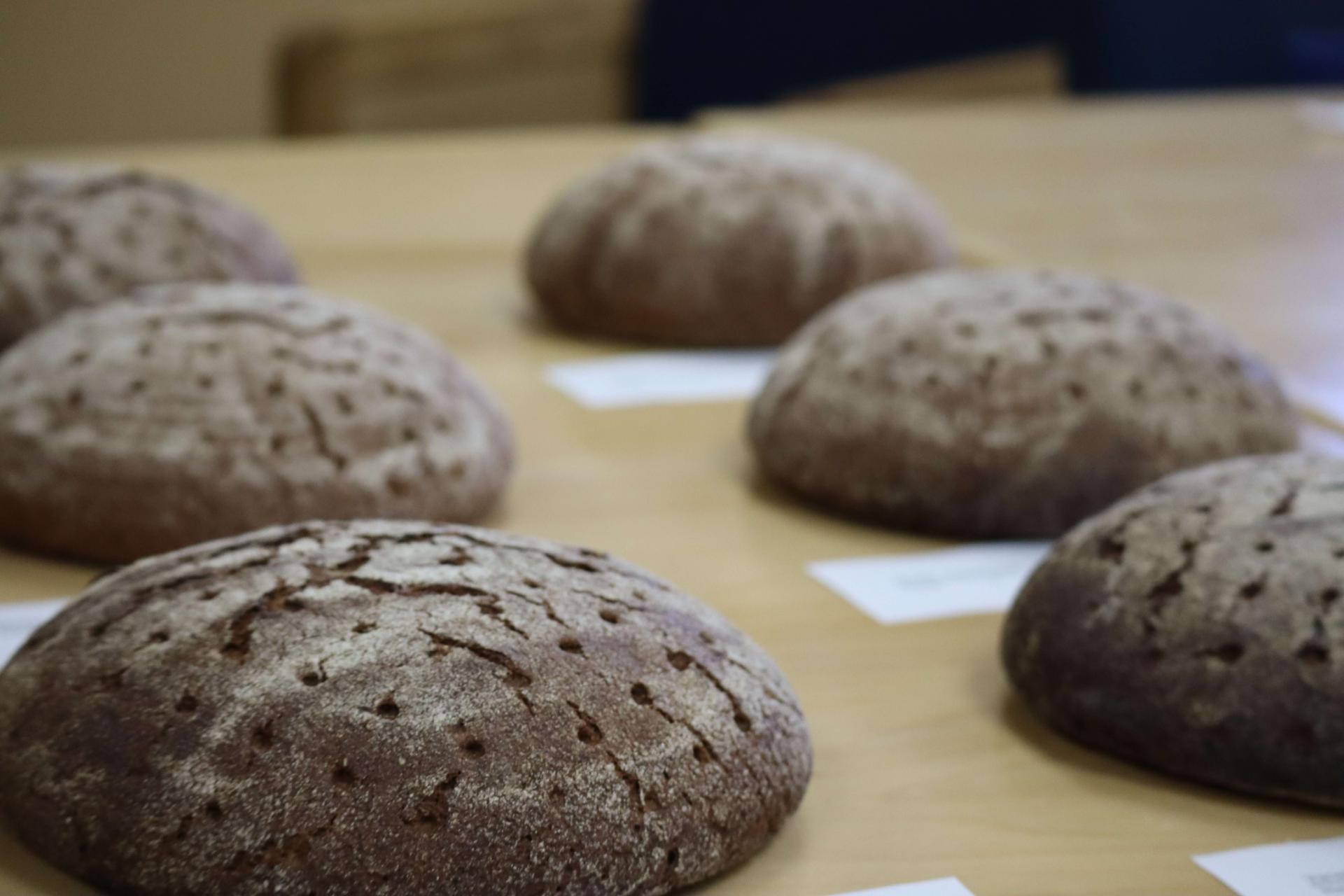Evaluating Impacts of Rye Harvest Dates On Product Quality Through Sensory Testing
At the UVM Extension Northwest Crops and Soils (NWCS) program, most of our research happens in the field while planting, growing, and harvesting crops to understand how they perform under different conditions and management practices. However, the NWCS research doesn’t stop when the crop is harvested. To gain a deeper understanding of the ultimate quality of a crop, we use staff in our group who have been trained in descriptive sensory analysis (DSA) to objectively measure its sensory quality, as well as products made with it. This is where Roy Desrochers steps in. He is our resident sensory expert and has over 42 years of experience providing sensory support to large and small food and beverage companies and their suppliers.
Roy’s work involves using the human senses such as taste, smell, and feel, to objectively evaluate the sensory quality of ingredients and products. It isn’t about subjectively determining whether something is “good” or “bad”, but rather rating products in an objective way to improve the product’s performance in the market. Roy leads panels of NWCS trained tasters to evaluate various products such as grass-fed milk and beef, artisan cheese, hops and beer, grains, and artisan bread.
On our most recent sensory panel, the team evaluated bread made from two different varieties of rye that were a part of a rye harvest date trial conducted in 2024. Within this trial, rye varieties ‘Danko’ and ‘Hazlet’ were harvested at weekly intervals over four weeks, with various field and harvest metrics collected over this period. Additionally, standard lab analyses for cereal quality were conducted in the E.E. Cummings Crop Testing Laboratory including grain starch, crude protein, and falling number. Each of these analyses are typical indicators of grain quality for both growers and bakers.

Where professional bakers assess the baking quality of the grains and often utilize lab analyses to discern differences and adjust recipes, the trained taste panel is a human instrument that objectively measures the aroma, flavor, and texture of the final products. The objective data generated by the trained taste panel can be interpreted using consumer overall liking information to predict the potential success of each variety of rye for use in different commercial products. Consumer satisfaction, or meeting customer needs for flavor quality, is critical to sustained success in the market. A minor change in practices at the farm, such as the date the rye is harvested, can affect the sensory quality of the final product.
Sensory is a unique and important part of our research. By combining on-farm research with producer experience and sensory knowledge, we can get a holistic understanding of crops from planting to consumption. It’s a winning story for farmers, producers, retailers, and ultimately customers.
You can learn more about ongoing and previous sensory projects on our website www.uvm.edu/extension/nwcrops/sensory-practice.
For additional information about our crop testing lab and various services please visit https://www.uvm.edu/extension/nwcrops/e-e-cummings-crop-testing-laboratory.
This material is based upon work supported by the National Institute of Food and Agriculture, U.S. Department of Agriculture, through the Northeast Sustainable Agriculture Research and Education program under subaward number LNE22-437.
Any opinions, findings, conclusions, or recommendations expressed in this publication are those of the author(s) and do not necessarily reflect the view of the U.S. Department of Agriculture.
